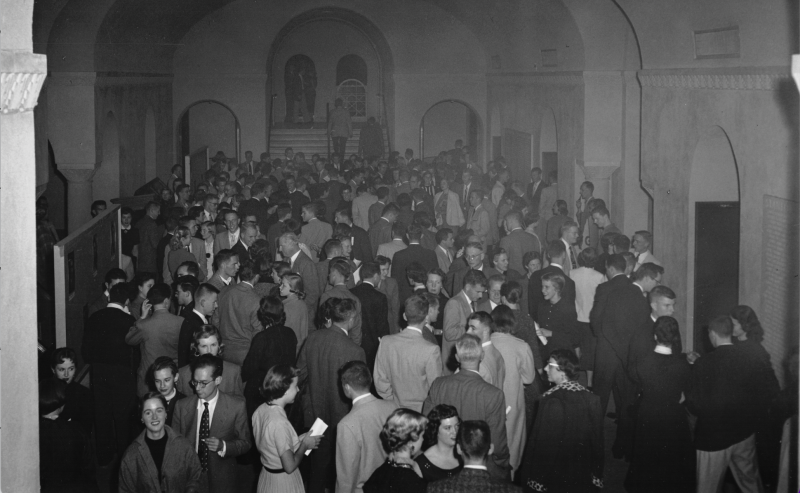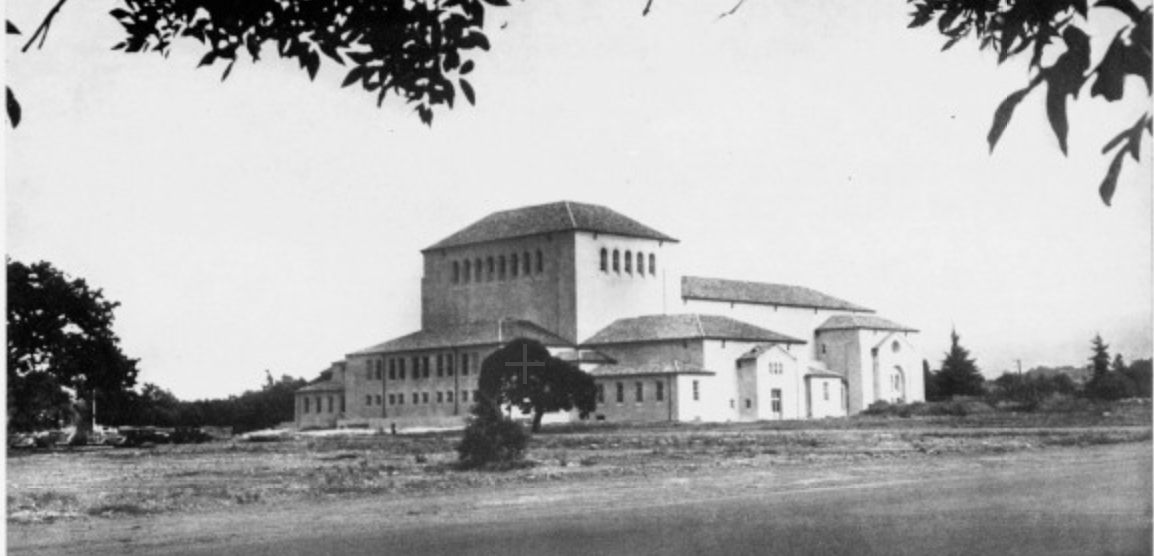Did you know that “Gaieties” used to be completely male-run? Or that the political climate during the Vietnam War led to a cancellation of the show? Or that balcony tickets used to cost a mere 15 cents?
‘Gaieties’ is the student-written comedy musical performed every year during Big Game week. Known for highlighting wacky Stanford spirit, the show is produced by Ram’s Head Theatrical Society, the oldest and largest theatrical organization at Stanford.
The 130-year-long evolution of “Gaieties” and Ram’s Head has been detailed by Vince Foecke ’82, the historian and archivist of Ram’s Head. He previously served as the organization’s executive producer from 1982-83 and participated in dozens of shows during his undergraduate education at Stanford.
“It’s become an obsession, but I love knowing the history,” Foecke said in an interview with The Daily.

It’s commonly said that Gaieties has been a tradition since 1911, but the history actually dates back to 1893.
Since neither Stanford nor Berkeley had their own stadium at the time, the football game took place at a stadium in San Francisco. The Stanford football team and fans made it a tradition to attend a theatrical show, which they called the Football Show, in San Francisco on the night of the game.
Students first performed their own show for the Big Game celebration in 1905. The production of “Beauty Shop,” which they modified for Stanford relevance, “was vaudeville and considered risqué at the time,” Foecke said.
“When the women of the chorus quit due to the show’s lack of ‘honorability,’ the men took over all the roles to avoid canceling the production.”
Students alternated between performing their own all-male show and attending a show in San Francisco — until 1911, when Ram’s Head Theatrical Society was founded as an exclusively male drama society consisting of a humble seven or eight students.
With the mission of promoting original student work, Ram’s Head started putting on Big Game shows consisting of student-written skits, songs, comedy and variety acts with no overarching narrative.

Ticket prices varied depending on seat location and old-fashioned social hierarchies of the time. Foecke explained that so-called “roughs,” male students who “wore corduroys instead of tuxedos,” sat in the 15-cent balcony seats “because they couldn’t be trusted to intermix with the ‘lords’ and ‘ladies’ who had paid an extra 10 cents for floor seats.”

The football show was referred to as “Gaieties” for the first time in 1925. Early “Gaieties” shows included an array of 15 musical numbers, generally halfway split between solo or duet acts and large chorus numbers. Real scripted “Gaieties” productions didn’t become the norm until later, beginning with the 1962 show titled “Once Around the Quad.”

“Gaieties” history is also intimately interwoven with the numerous military events of the 20th century.
Memorial Auditorium — where “Gaieties” is still performed today — was constructed in 1937 after theater students and Daily staff campaigned to utilize a $250,000 World War I memorial fund. Students voted to make up the remaining cost with a $1 increase in tuition each quarter.
Prior to this location, Gaieties was performed in Assembly Hall (now Building 120, or McClatchy Hall).

The first show in the newly-built Memorial Auditorium was attended by Hollywood talent scouts. Two former “Gaieties” stars, Lloyd Nolan and Winstead “Doodles” Weaver ’35 were already under Hollywood contracts from their “Gaieties” performances. Both went on to have successful careers in Hollywood as actors, with Nolan even winning an Emmy for best actor. While at Stanford, Nolan flunked out for not attending any classes except his dramatics class, and Weaver was suspended for pulling a prank on the train home from the Rose Bowl.
The University eventually released a statement disallowing men from impersonating women in theater, so Ram’s Head made the major shift from all-male to co-ed.

The women of Stanford overtook the historically-male positions of “Gaieties” assistant director, technical director, director and executive producer in 1944, when World War II changed the gender makeup of campus. Many male students left to fight, while other U.S. men were instead sent to Stanford to study engineering for the war effort. Thus, although there were still men in the cast, most were G.I.’s who didn’t have the time to take on leadership positions.

War reared its head yet again at the height of U.S. involvement in the Vietnam War, when students were engaging in campus protests and sit-ins. A disagreement between staff and the writer about the vision for “Gaieties” in light of the war led to the show being canceled in 1968.
Just three years later, Ram’s Head went into bankruptcy. The drama department at Stanford was growing, and Ram’s Head was starting to get squeezed out of the auditorium because of the increased competition. In 1970, Ram’s Head had to perform “Gaieties” in Little Theatre (now Pigott Theater), which only had 200 seats in comparison to the 1700 seats in Memorial Auditorium. The 1971 show had to be performed in Dinkelspiel Auditorium, which was built as a symphony hall rather than a theater; this show was deemed a flop and culminated in the group’s financial troubles.
In 1977, a handful of students from an experimental theater community resuscitated Ram’s Head from its six-year intermission, bringing it to the form we know it today.
“What’s a Gaieties?” was the first “Gaieties” show since Ram’s Head’s bankruptcy and reintroduced the tradition to Stanford students. The show was a combination of original and Broadway songs that were tweaked for Stanford relevance. Even without a script, the show sold out, and Ram’s Head even added a third night to accommodate the high volume of interest.
“Gaieties” has largely retained its profitability and popularity ever since, even surviving through the COVID-19 pandemic with a 2020 online show titled “Unprecedented Times.”
The naked run — which involves naked student volunteers quickly running across the stage with the lights of the theater dimmed — evolved into a notable tradition over the years.
“We are very aware of the potential dangers, and we try to be super intentional in the way we explain it to make sure it’s safe and fun for everyone,” said Liam Smith ’25, the current executive producer of Ram’s Head.
This year, there were 25 sign ups for the naked run on Wednesday and Thursday, and almost 40 on Friday.

Despite being a comedic show, “Gaieties” is not only for laughs. To Kiki Hood ’23, the former executive producer of Ram’s Head, the show is a conduit to voice grievances against authorities while also prompting introspection among its members.
According to Smith, Ram’s Head leadership “prioritize[s] talent over skill” while casting, “because training in musical theater is not accessible to most people.” Last year, two of the leads had no theater experience.
As a community connected by a shared goal, Smith says, “Gaieties” has been a place to find lifelong friendships. The show also serves as a bridge to connect the student body audience in an unconventional way.
“Many Stanford students can identify with aspects of their freshman selves or experiences portrayed on the stage, providing an opportunity to connect with depicted flaws, missteps and insecurities. This allows them to feel seen and engage in a cathartic laughter at their own expense,” Hood said.
As for the future of “Gaieties,” Hood hopes for even more audience participation, such as establishing a well-known sing-along song that students can look forward to each year.
Smith underscored the enduring legacy of “Gaieties” as he recounted an eye-opening experience with a 102-year-old woman at an alumni reunion who had participated with Ram’s Head back in the 1930s.
“‘Gaieties’ is so fundamentally ‘Stanford,’” Smith said. “Meeting that 102-year-old woman is when I realized how much this tradition needs to be protected.”
